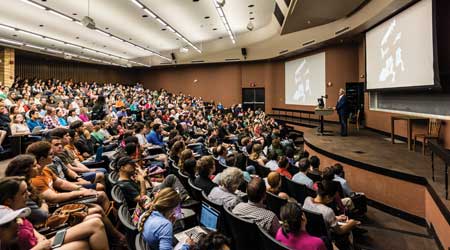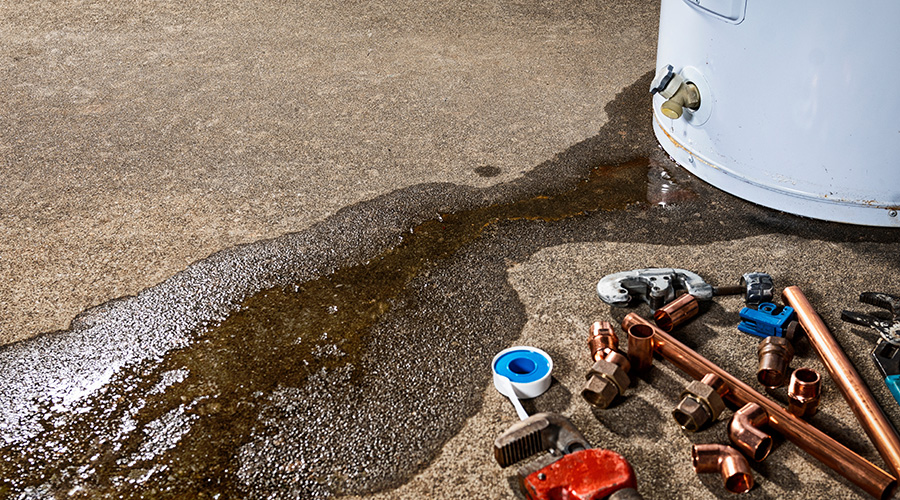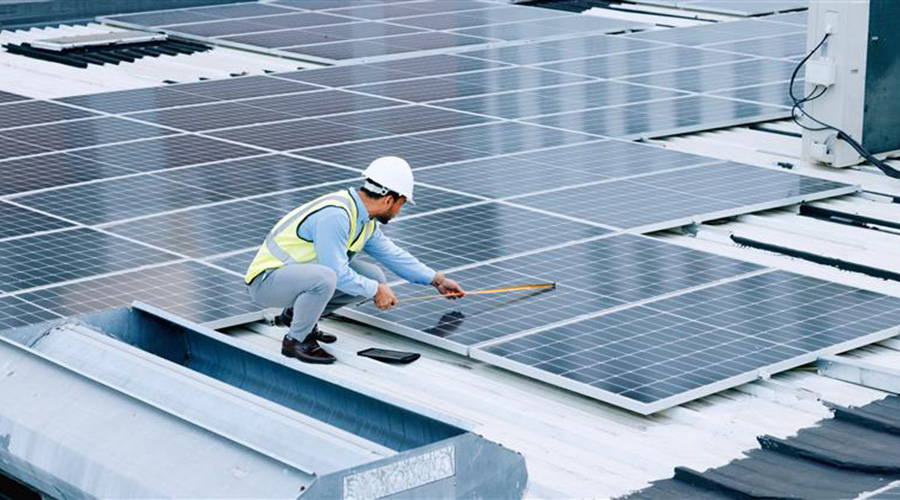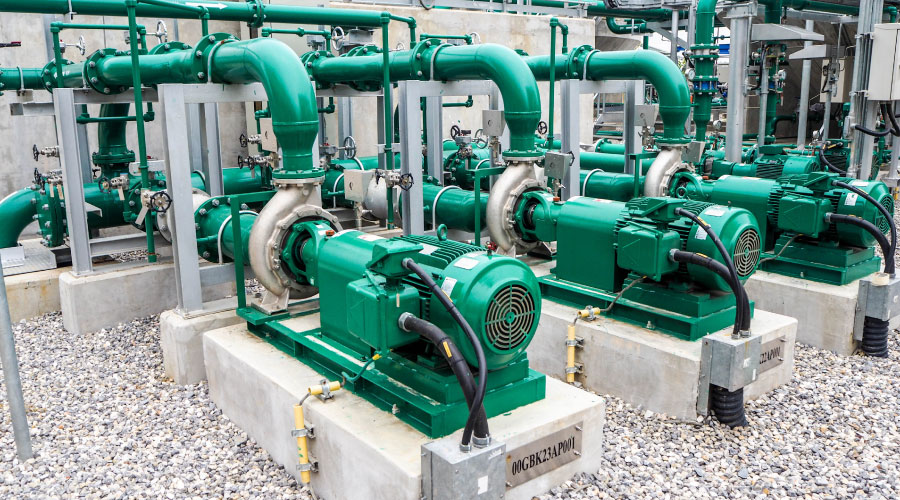 As instructors and students return to the campus, they are looking more closely at HVAC system components that affect their health.
As instructors and students return to the campus, they are looking more closely at HVAC system components that affect their health.HVAC Strategies for Higher Education During the Pandemic
Protect the health of returning students and staff with these tips and lessons learned regarding HVAC strategies in higher education facilities.
In preparation for reopening higher education facilities, much of the scrutiny in preventing the spread of the coronavirus has fallen on housekeeping and sanitation. How many hand-sanitizing stations does a facility have? Where are they located? What is the new cleaning schedule? How do housekeeping personnel deal with high-touch surfaces?
Increasingly, however, maintenance and engineering managers are going beyond the human interaction aspect of transmitting COVID-19. As instructors and students return to the campus, they are looking more closely at components of HVAC systems that directly and indirectly affect their health and safety. How can HVAC systems prevent the spread of the coronavirus?
Components in the spotlight
It is easiest to view the transmission problems and solutions in the eyes of the occupants: You’re a student returning to school after a long summer. You walk into the classroom and eye the back of the room where you prefer to sit. You make your way to the second last row and take a seat on the aisle. You take a deep breath and start another semester.
Let’s focus on that deep breath. As occupants begin filling classrooms, dormitories and conference rooms, the concentration of germs transmitted via the air can increase. As a result, managers need to make sure building HVAC systems and components provide the healthiest building air.
According to ASHRAE’s most recent statement regarding the impact of HVAC equipment on the spread of the coronavirus, “Ventilation and filtration provided by heating, ventilating, and air-conditioning systems can reduce the airborne concentration of SARS-CoV-2 and thus the risk of transmission through the air.” Here are some components of HVAC systems that have impacts on reducing the spread of the coronavirus.
Filtration. The first and easiest upgrade to HVAC systems is ensuring airstreams use the proper filtration. ASHRAE has recommended upgrading systems with filter media with a filter with a MERV 13-16 rating.
Depending on the types of filters the systems had been using, technicians might need to make a few adjustments to keep the system working properly. If there is an added pressure drop due to the increased filtration, they need to make sure the fans are capable of overcoming this and adjust setpoints as needed. They also might need to adjust the filter-alarm differential- pressure setpoint to prevent nuisance alarms resulting from the added pressure drop.
It is also important to make sure filters are the correct size and are installed without gaps or breaks in the filter area. It is all too common to see air bypass filters through improper installation due to the installation of incorrectly sized filters or the pressure drop high enough that it buckles the filters and causes a break in the filter wall.
Ventilation. When it comes to providing healthy indoor air, the next upgrade to an existing system involves adjusting the outside air rate or volume for each system. ASHRAE suggests increasing outdoor air ventilation by disabling demand-controlled ventilation and opening outdoor air dampers to 100 percent as indoor and outdoor conditions permit.
This upgrade might involve adjusting the sequence of operation and controls programming for these units. Or if the sequence permits, technicians can make a few setpoint adjustments to an economizer mode of operation to allow the damper to open fully. Making the adjustments through the program or front end is always more appealing than overriding the dampers in the field.
Managers need to keep in mind that these units should be able to handle the heating and cooling loads with the added amount of unconditioned air, but technicians need to be sure to trend the temperature setpoints as a double check. As a simple last check, they need to make sure dampers actually open. Some older systems and dampers get used to being at a certain position and will not move if commanded to do so. This check is simple but critical.
Air changes. The third suggested upgrade to an existing system is reviewing the amount of air changes in each space. Air-change rates are typically designed for one to two air changes per hour (ACH) for a typical space. ASHRAE now recommends increasing these rates to four to eight times.
A quick calculation to find the current ACH for a space is: (room CFM x 60 minutes) / volume of the room in cubic feet = ACH. If technicians can make adjustments, they need to keep in mind this requires the system to be rebalanced with the updated airflows. Also, they need to further investigate to ensure the system can handle the added airflow – for example, by targeting high-traffic areas or spaces with high turnover rates or multiple occupancies, such as conference rooms, if the system only has a small capacity for increased airflow.
UV-C systems. Another upgrade recommendation includes installing UV-C systems to disinfect the conditioned building air. Managers have many types of these systems from which to select. In-duct systems are popular retrofit options if the correct materials and air characteristics are available in the existing system. The air velocity and temperature are key design factors.
Some UV-C systems integrate in air-handling units with options for placement either upstream and downstream of the cooling coils. Degradation can be a problem for retrofitting projects because many components, such as access door glass and filters, might not be UV-C resistant. ASHRAE has a list of material photo degradation types in standard ASHRAE RP1509.
Humidification. Studies show that air humidity levels influence the spread of airborne viruses, impact the severity of certain respiratory diseases and impact the life or activity of viruses. Low humidity levels increase the survival for viruses that cause respiratory infections, so it is imperative to keep space humidity levels to at least 40-60 percent RH for health, wellness and comfort.
Some humidification systems can be installed in a space and start adding moisture to rooms. Larger humidification systems can be incorporated into a facility’s HVAC system and can keep an entire building properly humidified.
Managers also must make key design considerations when implementing humidification systems in an existing or new building. If the system is installed in ductwork, managers need to ensure the system has minimum straight lengths of duct – known as the wetting distance – downstream of the humidifier. Room air conditioners might need to be more precisely measured, possibly adding a temperature compensation transmitter, because condensation could form on the inside of windows with the higher humidity levels.
As a cautionary item, managers should avoid the use of ceiling fans, personal fans and space heaters with internal fans. This equipment can push unfiltered air around the space, which is not ideal. Also, ASHRAE recommends running the systems for extended periods of time to keep the air moving in the buildings to provide the opportunity for more filtration.
Outside air intakes
One additional recommended upgrade to existing HVAC systems is to review outside air intakes of air handling units, rooftop units, dedicated outside air systems (DOAS) and similar equipment. All outdoor air intakes should be designed and installed at a minimum of 15 feet and up to 30 feet from exhaust systems in order to avoid allowing contaminants to mix with and enter the intake airstreams, also known as exhaust air re-entrainment.
ASHRAE 62.1 Standard elaborates on the design requirements for minimum separation distances for air intake, but it is a good practice to check an existing building’s outside air intakes for exhaust re-entrainment risks and identify potential concerns if the building were to have people who have COVDI-19. As ASHRAE says, “For re-entrainment of the virus to be an issue, there must be someone present in the building shedding, have it captured by the HVAC system, and be exhausted and then re-entrained through the outside air and re-introduced elsewhere. There is a very low percentage of being the transmission route for a building but warrants being checked.”
If a manager identifies any risks with exhaust re-entrainment, the next step is to consider intake protection. The exhaust from spaces where cases of COVID-19 are known cannot be assumed to be clean without taking active measures, such as outside air intake protection.
As mentioned earlier, it is important to increase the amount of outside air into these systems. Introducing fresh air instead of using returned or recycled air from the building reduces the risk of airborne viruses recirculating into the building’s spaces. The applicable spaces will have improved indoor air quality with increased outside air.
Managers do need to be cautious when increasing the outside air airflow. They need to consider the building’s pressure and, consequently, modulate the equipment’s return and exhaust fans. Introducing more outside air while keeping the exhaust systems the same could create noise issues at exterior doors and increase the force needed to open those doors, to list just two potential issues.
Related Topics:













